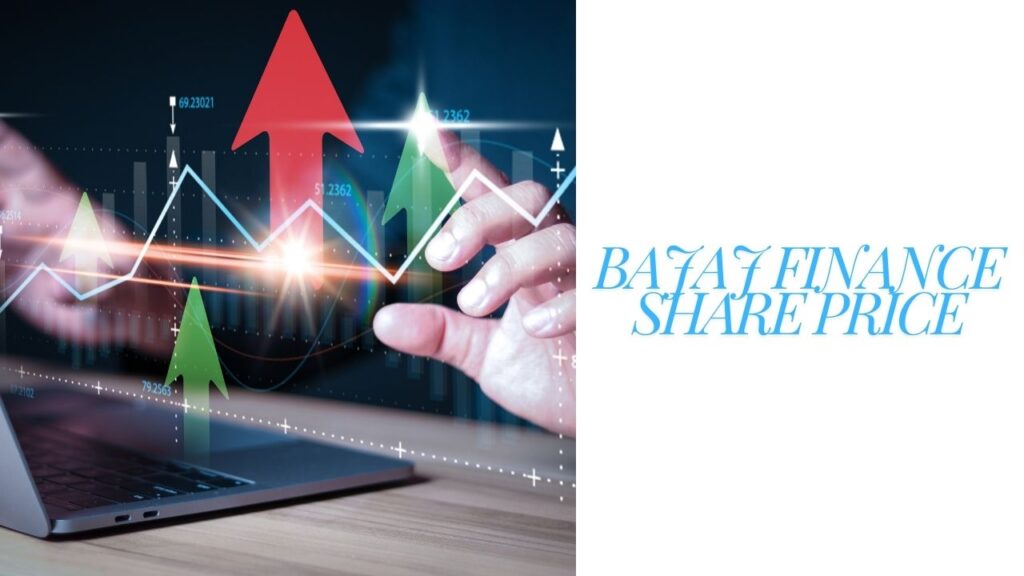Bajaj Finance has revolutionized consumer purchasing behaviour with its “buy now, pay later” business model. Customers can take advantage of this approach to acquire high-value items like mobile phones or electronics without incurring large up-front payments; for instance, if a phone costs Rs60,000 Bajaj offers instalment plans of Rs5,000 each month until full payment has been made over 12 months – not only making expensive items more accessible but also benefiting sellers by drawing in customers that might otherwise bypass such purchases altogether.
Bajaj Finance’s easy and hassle-free services have quickly become part of Indians’ shopping habits over time, leading to significant business expansion over the past 10 years and yielding impressive returns for its shareholders. Over this period, its share price skyrocketed from Rs7.6 in 1995 to over Rs5,900 by 2021–an extraordinary 77x increase! This extraordinary growth illustrates just how perfectly its business model corresponds with market demands while simultaneously positioning it as one of India’s premier providers of financial services.
How Has Bajaj Finance’s Share Price Evolved?
To understand Bajaj Finance’s success, one must examine its share price history. Started as a lesser-known entity back in 1995 with Rs7.6 as its stock price opened trading; after experiencing significant ups and downs – including one particularly dramatic fall when its share price plunged significantly by January 2008 from Rs54 at launch (due to global financial turmoil), ending at an all-time low at just under Rs6.2 reflecting their success so far!
Bajaj Finance has demonstrated remarkable resilience and recovery despite these setbacks, from reaching an all-time low of Rs4.4 in 2009, it experienced an astounding rebound reaching new highs of over Rs68 in 2010; a 114% jump versus 2009! Bajaj’s ability to quickly rebound displays both its robust business model as well as growing investor trust.
As Bajaj Finance shares rose, they reached Rs5,902 by 2021 – marking an amazing cumulative return and reflecting both its financial strategies as well as India’s changing consumer landscape. Data points towards one clear trend: Bajaj Finance successfully responded to shifting market conditions and consumer needs over time to generate long-term value for its investors.
What Are the Historical Returns From Bajaj Finance Shares?
Bajaj Finance’s potential as an investment becomes evident upon examination of its historical returns, with impressive compounded annual growth rates (CAGR). Over 10 years alone, for example, Bajaj Finance delivered an astounding CAGR of 54.57%; translating to an outstanding return on investment of approximately 774 times! Such results highlight its remarkable consistency amidst an otherwise unpredictable market environment.
Over 10 years, investors who invested Rs1 lakh would have seen that investment rise to Rs77.4 lakhs today! Returns over shorter time frames were equally remarkable with 1-year returns reaching 25.02% and 5-year returns reaching 54.52%; even over 20 years, your money had multiplied 1,961 times! These statistics demonstrate Bajaj Finance’s consistent outperformance against major Indian indices like Sensex and Nifty 50 making them among India’s best-performing stocks.
Bajaj Finance stands as an instructive case study for investors. It illustrates the value of long-term investing strategies and can show investors why holding onto high-quality stocks could bring substantial rewards over time. While market fluctuations will occur naturally, Bajaj Finance shows us how careful selection and patience may lead to substantial long-term gains.
How Can Bajaj Finance Shares Compare with Fixed Deposits?
To provide an accurate comparison between Bajaj Finance’s returns and traditional fixed deposits (FDs). An investor who had invested Rs1 lakh with Bajaj Finance between 2010-2021 saw an amazing 54.48% annualized return; by contrast investing that same Rs1 lakh into an average interest rate FD, which offered 7.4% returns, would only have yielded 2.04 lakhs over that same time frame.
Contrasting equity investments with traditional savings clearly illustrates their comparative strength. Fixed deposits provide security, yet their growth potential falls far short of that of equity investments like Bajaj Finance shares, making them an appealing investment option for anyone wishing to enter the stock market.
This comparison not only illustrates the benefits of equity investment but also serves to change mindsets among those reliant on fixed deposits for wealth accumulation. By diversifying with stocks like Bajaj Finance, investors can tap into exponential growth potential – emphasising the necessity of adopting an overall balanced investment approach comprising secure as well as high-growth options.
Conclusion: What Lies Ahead for Bajaj Finance?
Bajaj Finance’s future looks bright given its solid foundation and innovative approach to consumer finance. By adapting quickly to market changes and consumer needs, this company should continue its steady expansion over time. Through technological advancement and customer-focused initiatives, Bajaj Finance may capture even larger market shares within the financial services industry.
Investors should look at Bajaj Finance’s past performance while being aware of its inherent risks when investing in equity markets. Knowledge of market fluctuations will be vital if one wishes to replicate Bajaj Finance’s success story and benefit from Bajaj’s continued expansion story.








